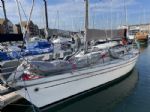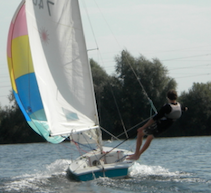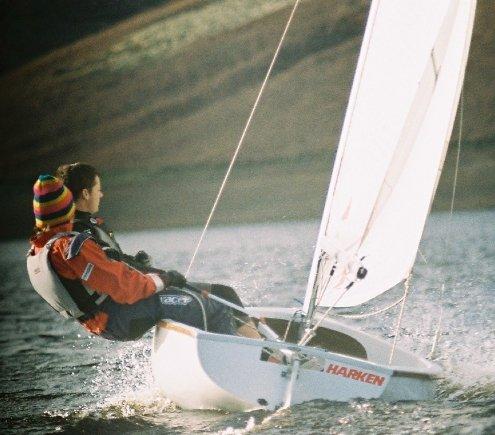












Boats for sale
| Laser 28 - Excellent example of this great design Hamble le rice |
 |
| Rossiter Pintail Mortagne sur Gironde, near Bordeaux |
 |
List classes of boat for sale |
windshifts and luffing rights |
Post Reply 
|
Page <12 |
| Author | |
Reuben T 
Groupie 

Joined: 22 Mar 13 Location: Lyme Regis Online Status: Offline Posts: 74 |
 Post Options Post Options
 Quote Quote  Reply Reply
 Topic: windshifts and luffing rights Topic: windshifts and luffing rightsPosted: 27 Jun 13 at 9:03am |
does this mean that the main rules issue in this situation is who has to keep clear after the wind shift rather than why they were effectively tacked by the wind shift? Would I have been exonerated if I had been protested? |
|
 |
|
Brass 
Really should get out more 
Joined: 24 Mar 08 Location: Australia Online Status: Offline Posts: 1151 |
 Post Options Post Options
 Quote Quote  Reply Reply
 Posted: 27 Jun 13 at 4:17am Posted: 27 Jun 13 at 4:17am |
|
Lets leave the 'shall not sail above her proper course' limitation in rule 17 aside for a moment. Presumably you're asking the question because you remember someone saying 'you can't luff beyond head to wind'.
That's a piece of somewhat inaccurate shorthand.
The rules analysis, for you as a leeward overlapped boat is as follows.
As leeward overlapped boat, the windward boat must keep clear of you (rule 11) even when you change course towards the wind, as long as when changing course you give the windward boat room to keep clear (rule 16).
You can change course all the way up to head to wind and this holds true, but if you, yourself pass head to wind, you become subject to rule 13 While Tacking and must keep clear of the other boat if she has not also passed head to wind.
This is where 'can't luff past head to wind' comes from: you can't luff past head to wind yourself.
If you change course all the way up to head to wind, giving the windward boat room to keep clear, and the windward boat, having less good boat handling than you or for whatever reason passes head to wind and you don't, then the other boat becomes subject to rule 13 While Tacking and must keep clear of you as long as you have not passed head to wind yourself.
If you change course all the way up to head to wind then past head to wind, and the other boat also passes head to wind, (or as in the example you described, the wind flicks and puts both of you past head to wind) then you are both subject to rule 13 at the same time and the boat on the other's port side shall keep clear (rule 13, last sentence). Remember this as 'the boat on the right is in the right'. It means that if you both started out on starboard tack, with you to leeward, and both came up and pass head to wind, you will be on the other boat's port side and will be required to keep clear. If you had started out on port tack, with you to leeward, and both came up and passed head to wind, then you will be 'on the right and in the right' and the other boat will be requried to keep clear.
Rule 17 is a limitation rule. It says that if you became overlapped within two of your hull lengths, and from clear astern, you shall not sail above your proper course. You can certainly sail above close hauled, pinching or luffing, up to the course you need to fetch the mark, but no higher. Edited by Brass - 27 Jun 13 at 5:25am |
|
 |
|
Quagers 
Far too distracted from work 

Joined: 24 Oct 06 Location: United Kingdom Online Status: Offline Posts: 279 |
 Post Options Post Options
 Quote Quote  Reply Reply
 Posted: 27 Jun 13 at 2:05am Posted: 27 Jun 13 at 2:05am |
|
How was the overlap established? Did you have lugging rights in the first place? I assume from the tone of the question that you feel that you didnt.
< id="adlesse_unifier_magic_element_id" style="display:none;"> Edited by Quagers - 27 Jun 13 at 2:05am |
|
 |
|
Reuben T 
Groupie 

Joined: 22 Mar 13 Location: Lyme Regis Online Status: Offline Posts: 74 |
 Post Options Post Options
 Quote Quote  Reply Reply
 Posted: 26 Jun 13 at 10:38pm Posted: 26 Jun 13 at 10:38pm |
|
I was almost on the lay-line to a windward mark with another boat just to windward of me, I was pinching to make the mark, forcing the other boat to pinch in order to keep clear. A sudden wind-shift then meant that we were past head to wind. Because I was forcing him above the corse he would have taken had I not been there (and therefore was the reason he became effectively luffed past head to wind) should I have done turns?
Also, if he had borne away faster when the wind-shift occurred in order not to almost tack and had made contact, would either of us had to do turns for that?
|
|
 |
|
Post Reply 
|
Page <12 |
| Forum Jump | Forum Permissions  You cannot post new topics in this forum You cannot reply to topics in this forum You cannot delete your posts in this forum You cannot edit your posts in this forum You cannot create polls in this forum You cannot vote in polls in this forum |
Bulletin Board Software by Web Wiz Forums® version 9.665y
Copyright ©2001-2010 Web Wiz
Change your personal settings, or read our privacy policy
Copyright ©2001-2010 Web Wiz
Change your personal settings, or read our privacy policy












 Printable Version
Printable Version Delicious
Delicious Digg
Digg Facebook
Facebook Furl
Furl Google
Google MySpace
MySpace Newsvine
Newsvine reddit
reddit StumbleUpon
StumbleUpon Twitter
Twitter Windows Live
Windows Live Yahoo Bookmarks
Yahoo Bookmarks Topic Options
Topic Options